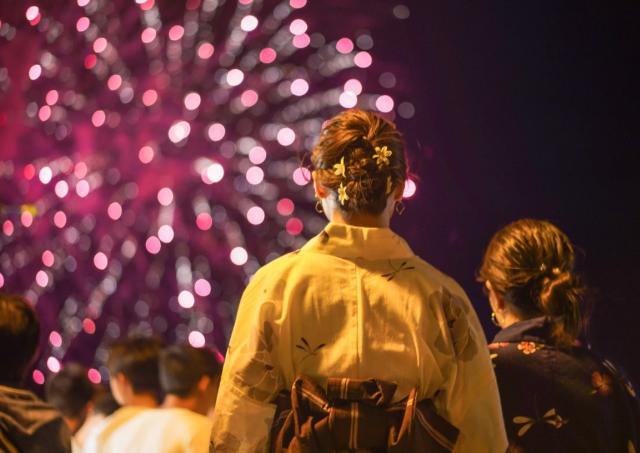What to Pack for Japan: Clothes and Essentials by Season
Japan is a great holiday destination, but there are some things about travelling around the country that make it quite a different experience from other places that you might be used to. For one thing, the weather varies heavily depending on the time of year or region you visit. And that doesn’t just mean a bit of rain or sun, but beautiful spring days in contrast to intense summer typhoons.
The country also has some important cultural points that will have some effect on what you carry around with you, such as the general lack of English, which means you need a translation tool or a portable charger so your phone can do all the work.
So let’s get packing!
Japan Packing Essentials
You probably don’t need us to tell you to pack the usual travel essentials like your passport and camera, so we’ll dive straight into the essentials that are more specific to Japan.
First up, you need to make sure that you have your Japan Rail Pass information if you ordered one. You need to bring the physical piece of paper you received in order to exchange it for your pass once in Japan. If you don’t know about the Japan Rail Pass, you can take a look at our blog post here about it.
Next, it’s a good idea to pack some cash or exchange some once you arrive. Although Japan is starting to accept contactless payment, and credit cards are quite widely used, there are still some places that only accept cash. It is also quite common for foreign credit cards not to be accepted or cause difficulties at ATMs, so it’s best to have some physical cash as a backup.
Speaking of backups, it’s also a good idea to have a portable charger and portable wifi for your phone. While big cities have various wifi hotspots, they aren’t everywhere, and you’ll probably need the internet to get around or to use translation apps while travelling. You can rent portable wifi routers at the airport or online for during your stay.
You’ll also want to bring an adapter plug or two, as Japan’s wall outlets are not only lower in power but also use two prongs instead of three.
The one item to pack that you might expect the least is a small hand towel. Hand driers took a while to take off in Japan, so many people would carry around their own small hand towels to use in the bathroom. During the pandemic, hand driers across the country were put out of use again, and many places haven’t reinstated them, so having a little towel is always handy. But you can buy these easily at souvenir shops in Japan, so maybe wait until you arrive to get one!
What to Wear in Japan
Now onto the clothes. Before we talk about the specifics of what to pack for each season, there are a couple of cultural points to note.
Generally speaking, Japan is quite a conservative country when it comes to clothes. This is especially true in restaurants, shrines, and temples. For women, although they might wear short skirts, it is generally frowned upon and uncommon to show cleavage. For men, going shirtless or wearing thin vest tops is not common, except for on the beach.
Tattoos are also still associated with the yakuza. This mindset is changing, but if you want to avoid stares it is best to cover them up.
If you’re going to traditional restaurants or onsen, it’s best to bring a pair of shoes that are easy to slip on and off, as you’ll have to take them off to enter!
With that in mind, what kind of clothes should you pack per season?
Keep in mind that the following information is based on Japan’s Kanto and Kansai regions. For northern regions, always pack warmer clothes, and for southern regions, pack lighter clothes!
What to Wear in Japan by Season
Spring (March-May)
Spring is a popular time to visit Japan, not least of all for its pleasant weather. Early spring is cooler, hovering around 10-15℃ during the day and a bit cooler at night, but in late spring, the temperatures start to climb to around 20℃. This is a great season for being outside and walking, so bring comfortable shoes. Pack layers so you can easily take them on and off as it gets cooler or hotter.
T-shirts
Light shirts
Jacket
Comfortable shoes
Sun cream
Layers
Summer (June-August)
Summer in Japan brings with it changeable weather. But one thing is for certain – it will be humid. June to early July is usually the rainy season, so everywhere feels warm and wet. This attracts mosquitoes and bugs, so it’s a good idea to have breathable long-sleeved clothing if you’re going to be outside much. When the rain gets going, it is no match for portable umbrellas, so waterproof clothing is best.
T-shirts
Shorts or skirts
Light, breathable trousers and long-sleeved shirts
Sun cream and mosquito repellent
Sunglasses and a hat
Rainwear
Waterproof or water-resistant shoes
Swimwear
Autumn (September-November)
Autumn is a lot like Spring in Japan. There is a lot of sun and pleasant weather. However, September is normally the typhoon season, which could bring a lot of wind and rain, and even weather warnings not to go outside. For that, bring waterproof clothing. For later autumn, bring layers so that you can easily adjust to the warmer daytime temperatures and cooler evenings.
T-shirts and light shirts
Light jacket in early autumn, something warmer later on
Sweaters
Long trousers and shorts
Lightweight trousers
Rainwear
Waterproof or water-resistant shoes
Winter (December-February)
Winter in Japan can get very cold and dry! But indoors and on trains are often very well heated, so if you’re spending time in the city, you’ll need layers that can be taken off inside. Various cold-weather items are sold around Japan, such as heat pads and heat-tech clothing, so you can buy some if you forget anything. And don’t forget your lip balm for that dry winter air.
Warm layers
Sweaters
A warm jacket
Gloves
Hat and scarf
Comfortable shoes
Trousers
Lip balm and moisturiser
This should give you a good idea of what you need to bring for your trip to Japan, no matter what the season. But if you’re still deciding when to visit, have a look at our blog post on how to decide the best season for a Japan trip.




